
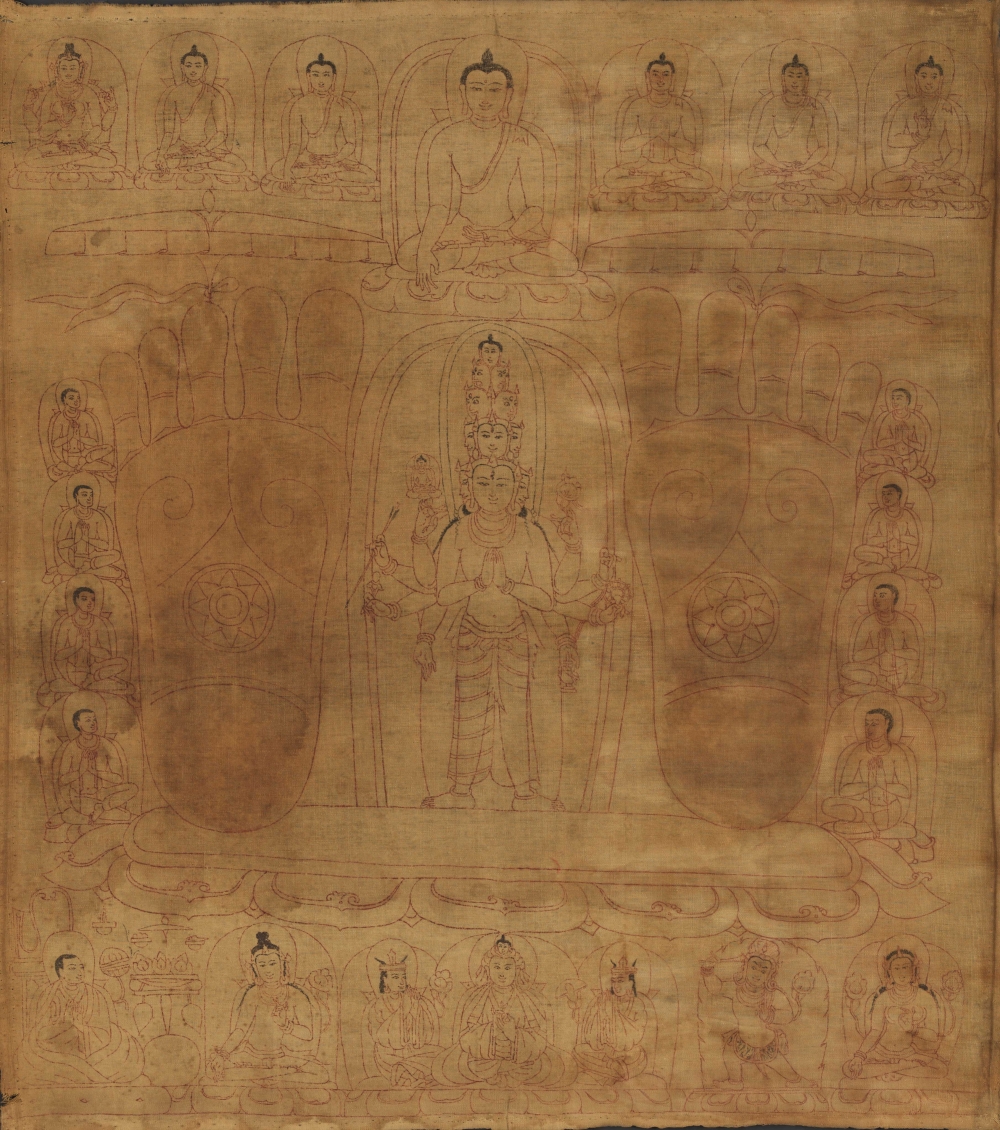
Although lamas’ footprints often appear on Tibetan paintings, the large size and elongated toes of the footprints in this artwork suggest that they represent footprints made by the Buddha Shakyamuni [...]
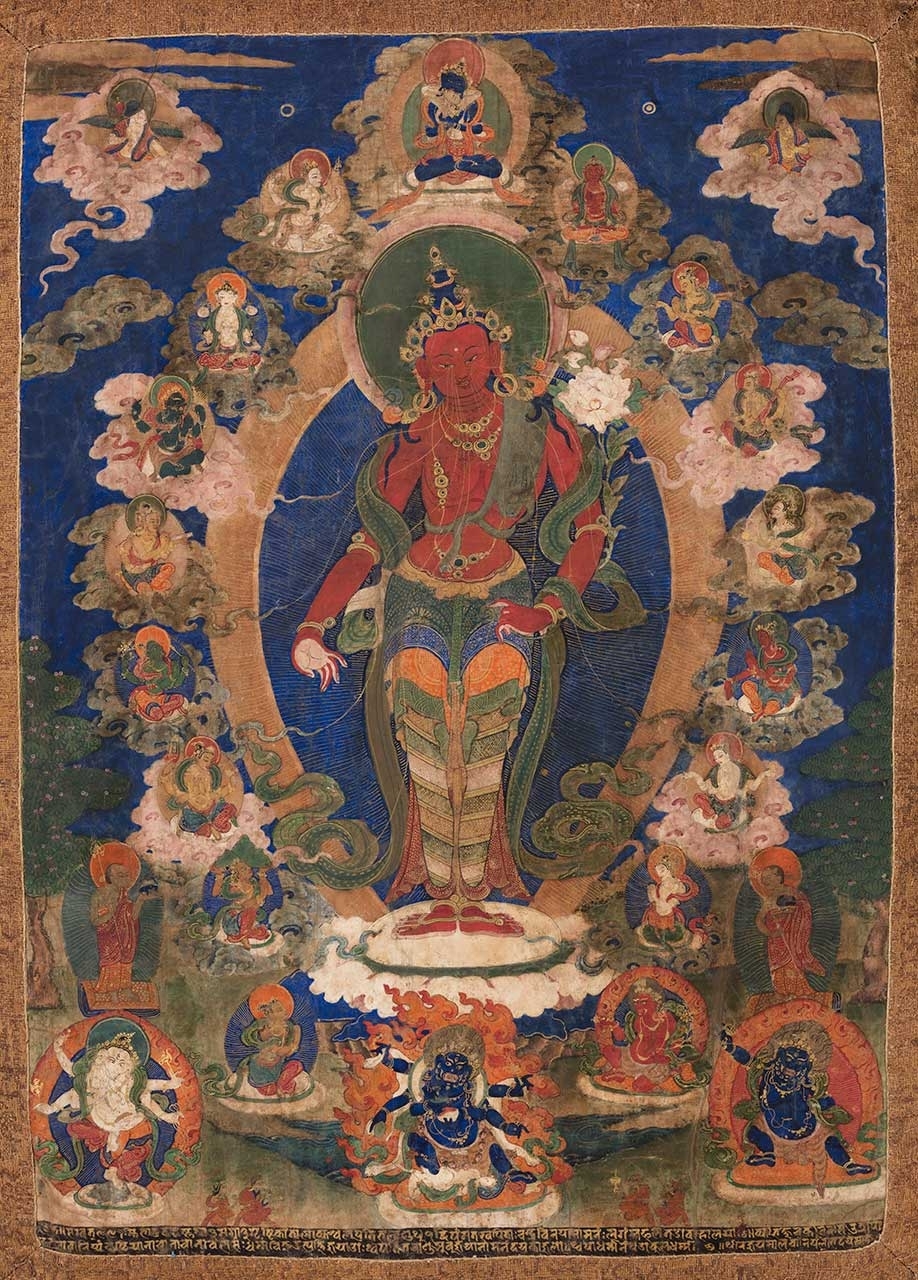
One of the most recognizable mantras in the world is om mani padme hum. While many know it, not all realize that it is associated with the bodhisattva Avalokiteshvara [...]

Avalokiteshvara, the bodhisattva of compassion and the patron deity of Tibet, presides over his celestial dwelling of Mount Potalaka, believed to be an island off the coast of Western India [...]
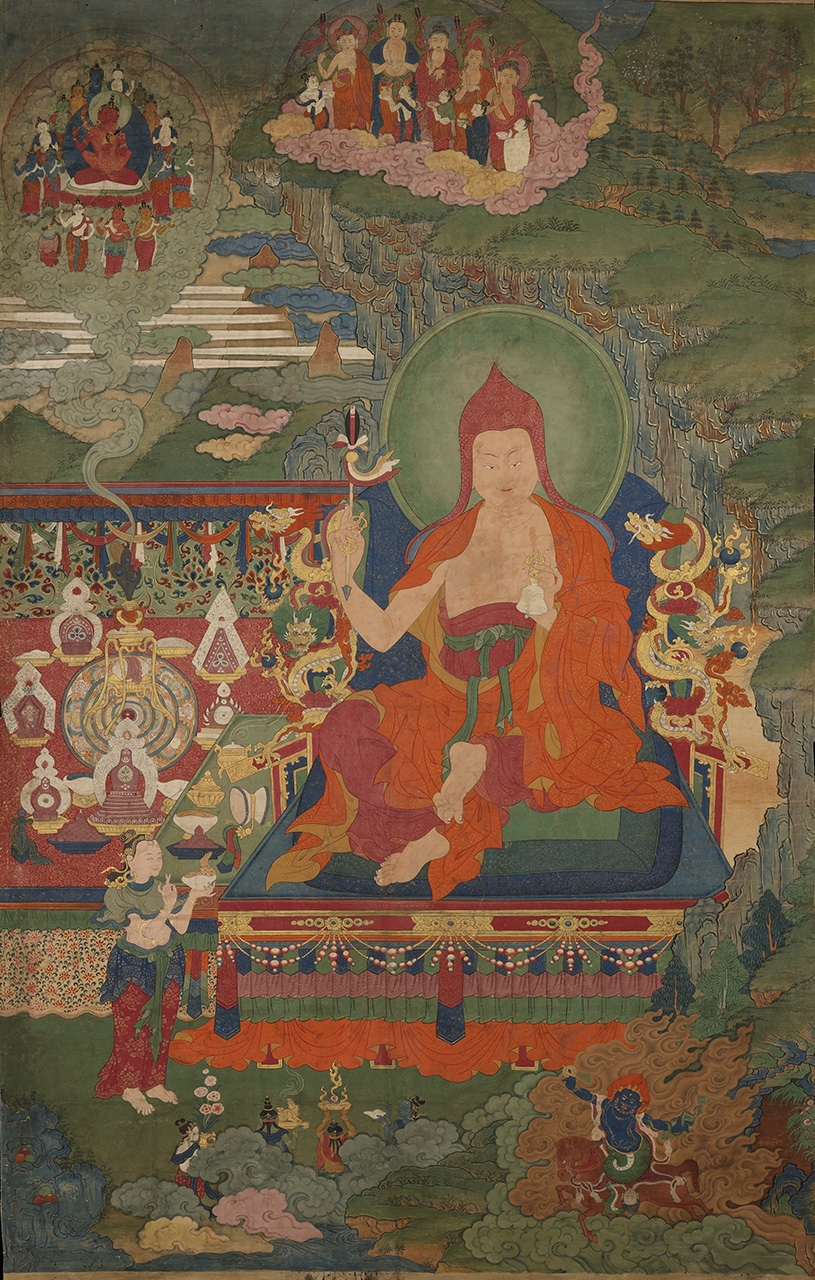
The eighth-century master Namkhai Nyingpo, one of the twenty-five disciples of the Indian master Padmasambhava, is shown in this painting dressed in monastic robes and holding an arrow symbolizing longevity in his right hand [...]

The Bardo Thodol, Liberation Through Hearing During the Intermediate State, also known in the West as the Tibetan Book of the Dead, is the best-known work of Nyingma literature [...]
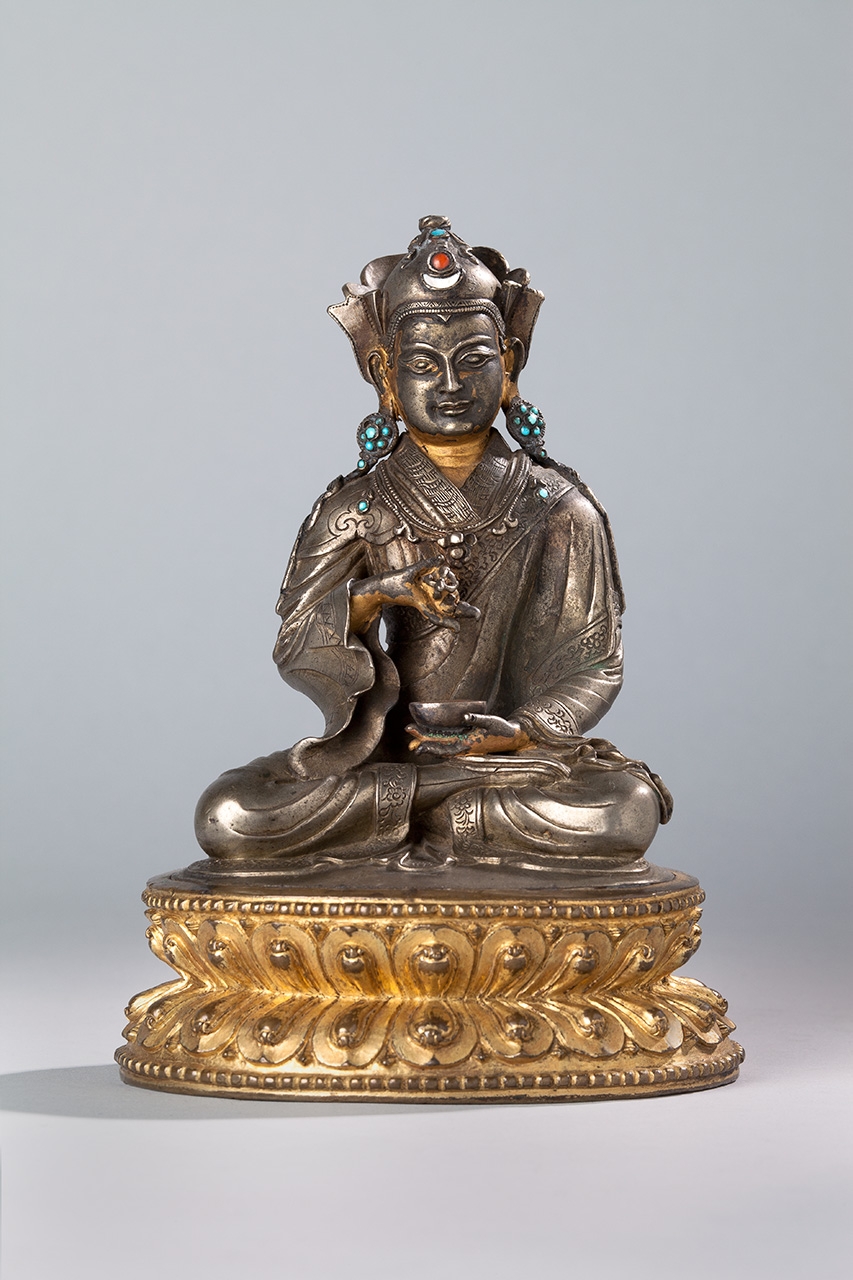
Padmasambhava, an Indian teacher said to have been miraculously born inside a lotus flower—hence his name, which means “lotus-born”—is revered by all schools of Tibetan Buddhism. He is credited with taming the forces adverse to Buddhism in Tibet, including many indigenous gods that he transformed into Buddhist protectors [...]
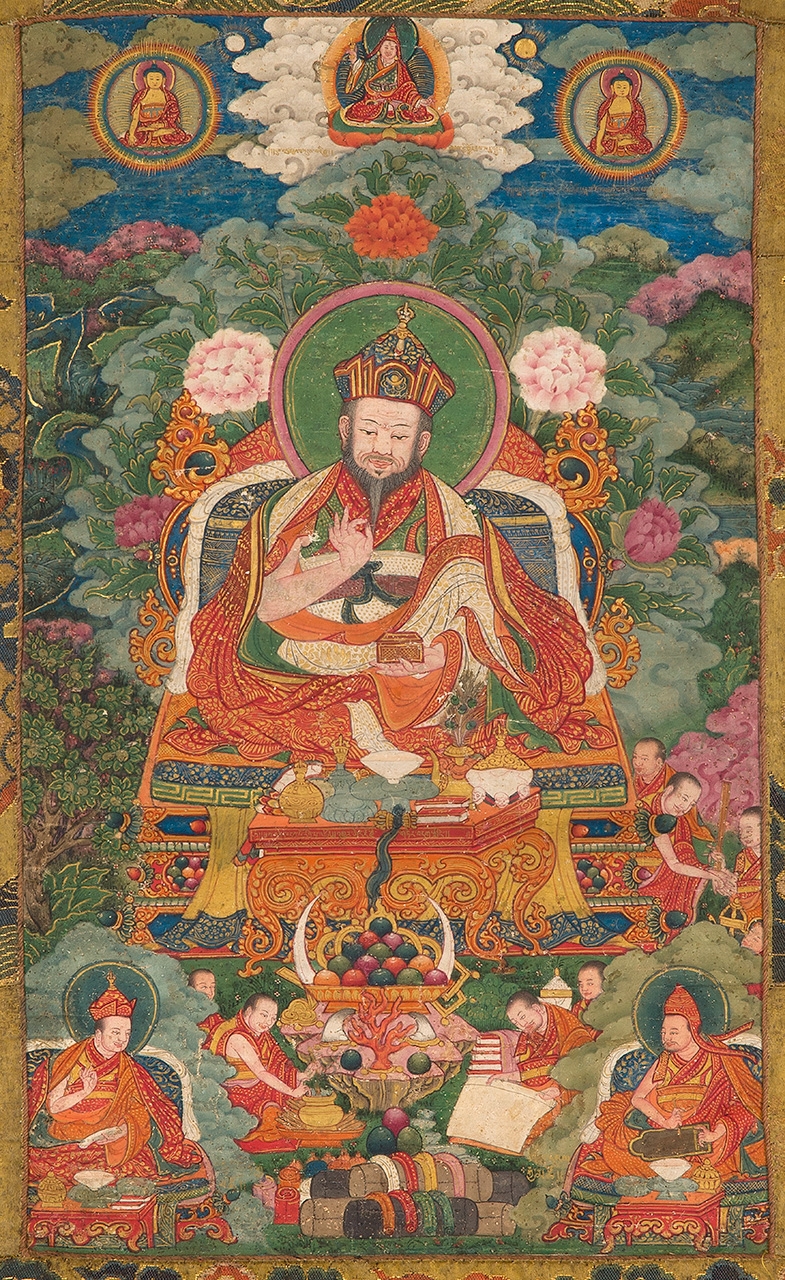
This is an engaging portrait of Terdak Lingpa Gyurme Dorje (1646–1714), the founder of Mindroling Monastery, which came to be regarded as the chief monastery of the Nyingma Tibetan Buddhist tradition. Terdak Lingpa wears the robes of a lay practitioner and holds a square casket, a symbol of his role as a revealer of hidden teachings (terma) [...]

This luminous painting of the Future Buddha, Maitreya, shows him sitting on his celestial throne in Tushita heaven radiating light. The Future Buddha sits with his legs extended as if poised and ready to descend to earth and take up his ministry as the buddha of the next eon [...]
__large-original-ratio.jpg)
Maitreya is one of the great bodhisattvas said to reside in the realm of Tushita, where he awaits his time to be born as a human and manifest his life as the future Buddha [...]
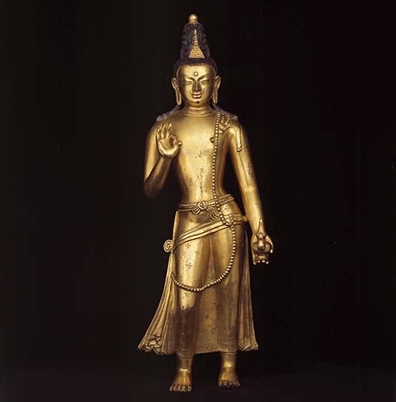
Maitreya, the Buddha of the Future, recognizable by the stupa in his hair, is a special focus of worship among the Mongols. The promise of the coming of a new age, which the Buddha of the Future would usher in, was especially appealing to them, and they linked this story with their aspirations to reestablish the glory days of the Mongol Empire [...]
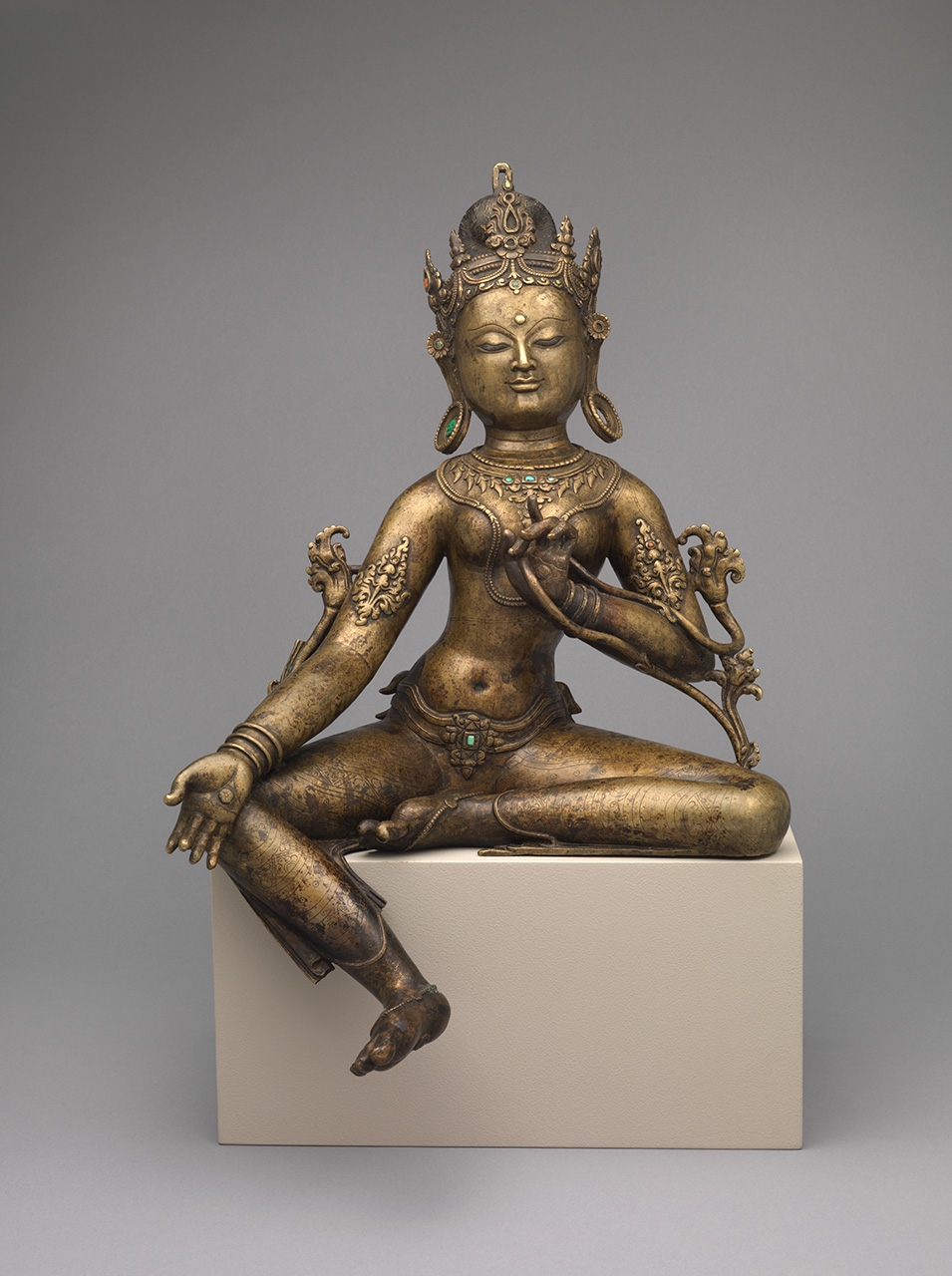
The enlightened female Tara (known in Tibetan as Drolma or “she who liberates”) has many forms, represented by different colors. The most popular forms are White Tara and Green Tara, depicted here. It is common for 21 forms of Tara to be represented together. Green Tara is understood in some contexts to be a bodhisattva, on her way to enlightenment, and in other contexts she is seen as a fully enlightened Buddha. She is associated with overcoming all kinds of obstacles. This 13th century sculpture was made in Tibet and shows how important the influence of Indian artistic style was in Tibetan art. Notice the relatively large head, firmly grounded posture, and gentle sense of motion. These traits suggest the qualities of kindness, maternal care, and powerful beauty associated with Tara.

__large-original-ratio.jpg)